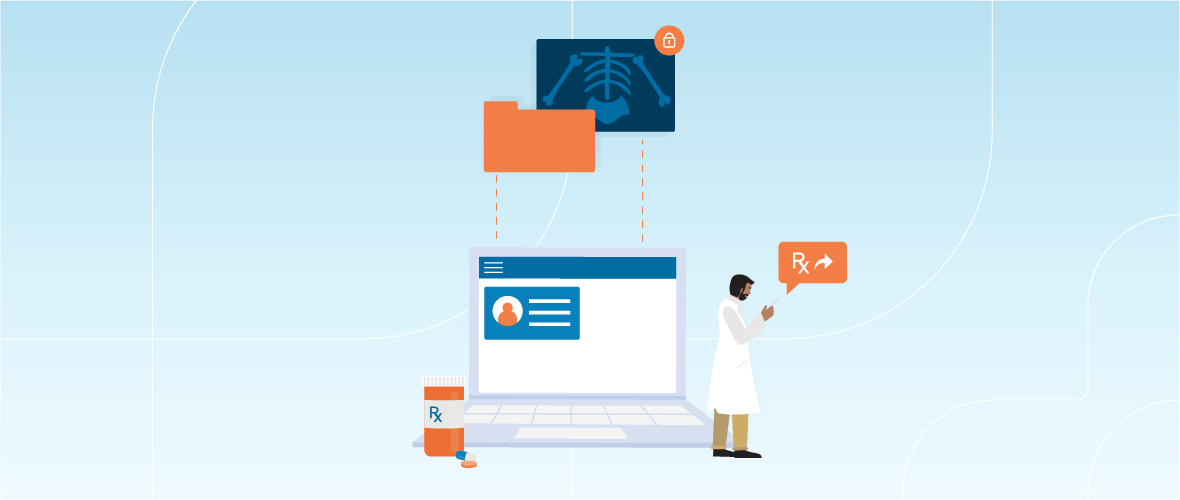Automated refills, medication management applications, and text reminders have made keeping track of important medicine easier for the 48.8% of Americans who have taken at least one prescription drug in the last 30 days. However, prescribing medications has several complexities. For patient safety, it’s critical that physicians take special care to avoid prescription errors, illegible prescriptions, adverse drug interactions, drug misuse, and poor medication adherence.
Costly Rx Mistakes
Approximately 4.55 billion prescriptions will be filled this year in the United States. This massive quantity of prescriptions presents room for mistakes and adverse effects. Prescription errors make up 70% of all harmful medication mistakes and include the following examples:
- Illegible or missing words
- Confusing or inaccurate abbreviations
- Prescribing the wrong medication due to similar sounding or looking names
- Under or overprescribing
- Dosage issues
- Failing to take into account patient’s medical history, including allergies or sensitivities
- Failing to consider potential drug interactions
Computer-generated prescriptions can help mitigate issues with poor handwriting. However, without a comprehensive E-Prescribing system, there is still potential for dangerous, incomplete, or erroneous prescriptions. Physicians need fast, reliable access to medication history and drug or allergy interactions for patients.
Managing Controlled Substances
The prescription drug misuse crisis continues to grow in the United States. According to WebMD, 18 million people, aged 12 years or older, have misused prescription drugs in the past year. Opioids, central nervous system depressants, and stimulants are the most commonly misused classes of prescription drugs.
In an effort to combat the misuse of controlled substances, the DEA has tightened its regulations for electronic prescriptions for these drugs. E-prescription software must be Electronic Prescription for Controlled Substances (EPCS) certified to fully comply with these regulations.
Regulations include proof of authorization to prescribe controlled substances, access controls, two-factor authentication for signing prescriptions, and detailed reporting for auditing. This software facilitates the monitoring of potential doctor shopping and drug misuse as it integrates with state prescription drug monitoring programs (PDMP).
Paper prescriptions and patient health records are easily stolen, tampered with, or otherwise altered to provide greater access to prescription drugs. They also expose DEA numbers, opening the door to physician identity theft.
Poorly integrated Electronic Health Records pose similar threats-without the ability to seamlessly track the use of controlled substance prescriptions by patients, physicians increase the risk of doctor shopping, a rising trend in recent years as patients visit multiple physicians to obtain controlled substances. The risks are significant as experts estimate that over 21% of all unintentional prescription overdose deaths involve doctor shopping.
Managing Forgotten, Abandoned and Misused Prescriptions
Beyond prescribing and administration, medication adherence is another critical factor for patient safety and health. The CDC estimates that one in five new prescriptions are never filled. Even when patients do fill prescriptions, there is still a risk they will fail to take them as prescribed, increasing the potential for side effects, adverse reactions, longer periods of illness, etc. Common medication adherence issues include:
- Taking a lower or higher dose than prescribed
- Failing to complete the entire course of the medication
- Not following administration instructions
One of the primary reasons patients fail to fill or take medications as prescribed comes down to cost. To avoid the “sticker shock” that often occurs when patients visit the pharmacy, physicians need to have access to the patient’s insurance information to select covered generic or preferred medications.
E-prescribing software securely stores and displays this information for effective, seamless prescribing, tracking, and counseling. Information about whether prescriptions have been filled will prompt any necessary follow-up counseling on medication adherence in future visits, through other phone or electronic communications.
Electronic prescriptions also help decrease processing times and allow patients to receive necessary medications sooner. The prospect of return trips to the pharmacy only makes it more likely that patients will delay or forgo filling their prescriptions altogether. Patients will appreciate not having to deal with the frustration of arriving at a pharmacy ready to pick up their medication, only to find it’s still pending or unavailable. Prescription errors present a greater risk for malpractice claims. Fortunately, 73% of malpractice claims for adverse drug reactions are preventable. Learn more about how to safeguard patient safety and avoid prescription errors in RXNT’s Medication Management roadmap, part of the free Risk Awareness Toolkit.
Sources:
Medication errors: prescribing faults and prescription errors
Medication errors: prescribing faults and prescription errors
Patterns of abuse among unintentional pharmaceutical overdose fatalities




